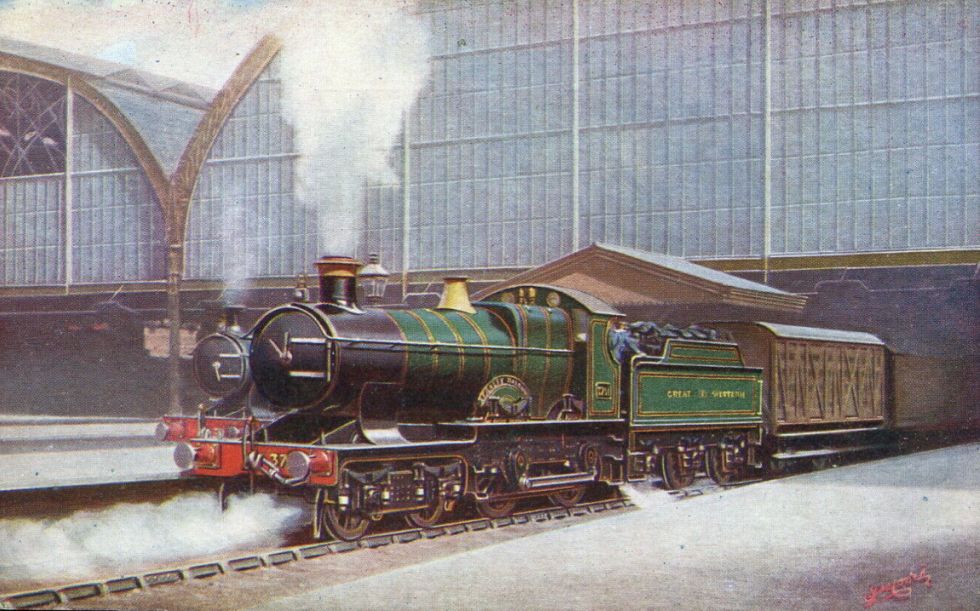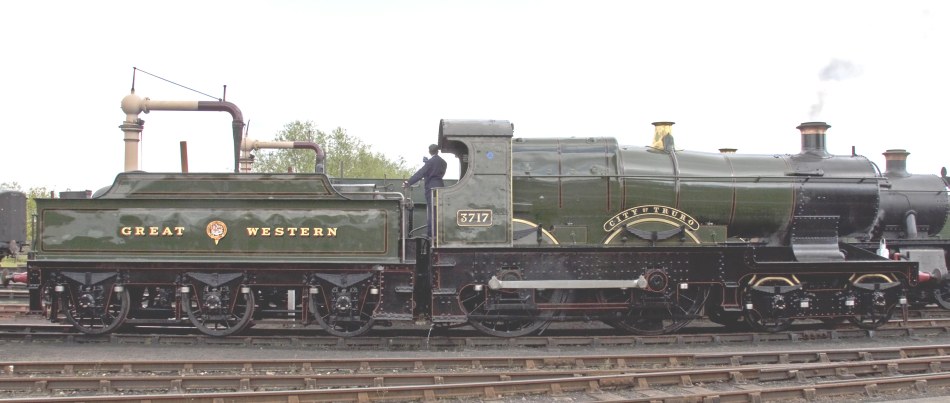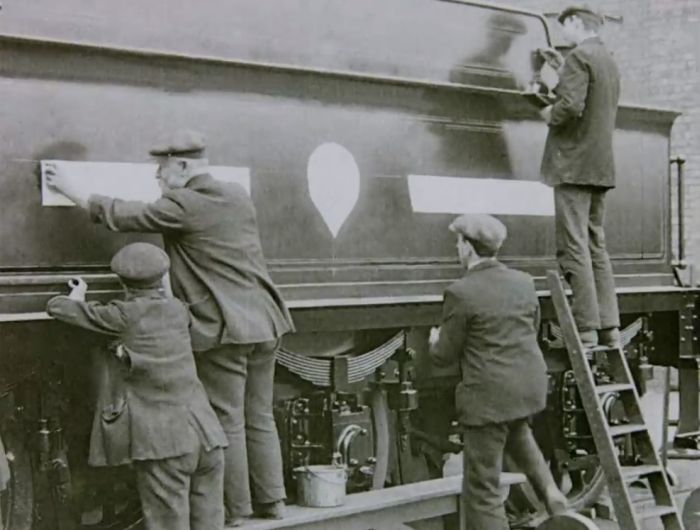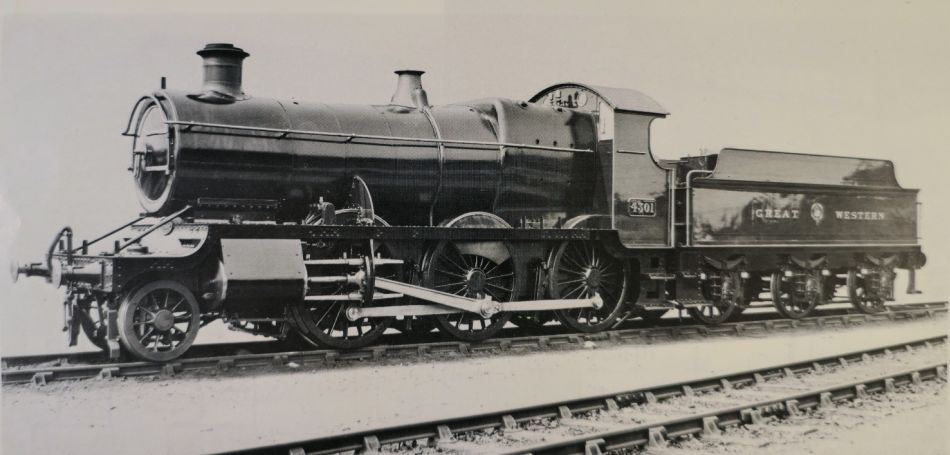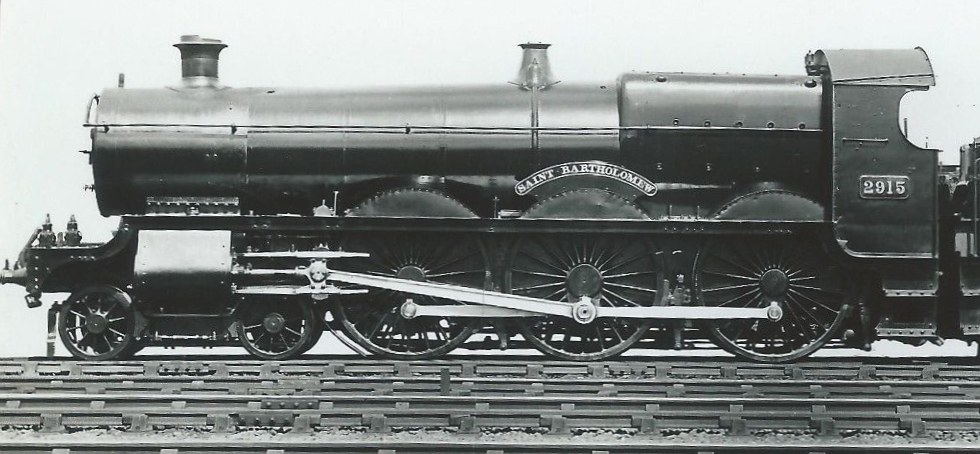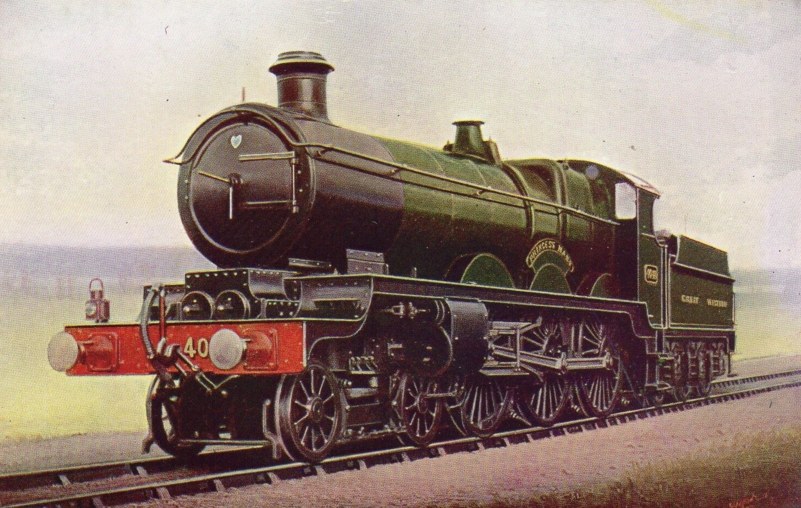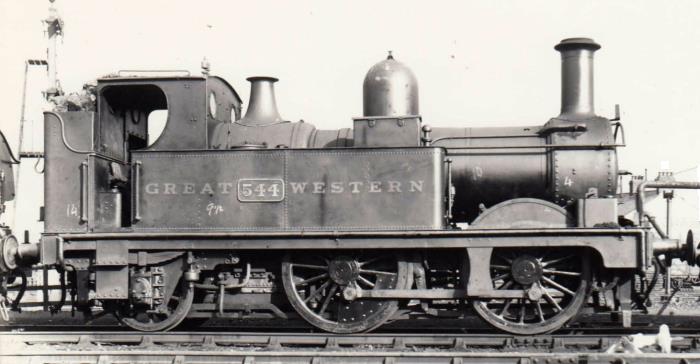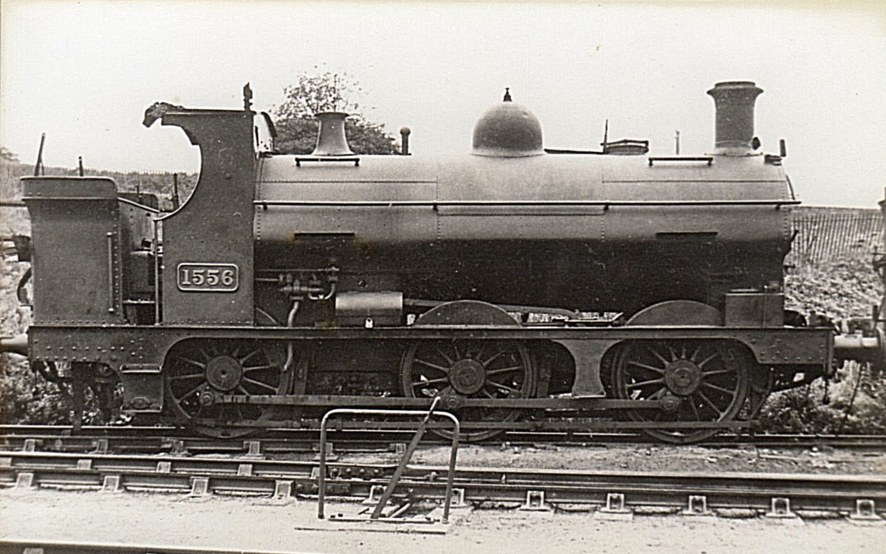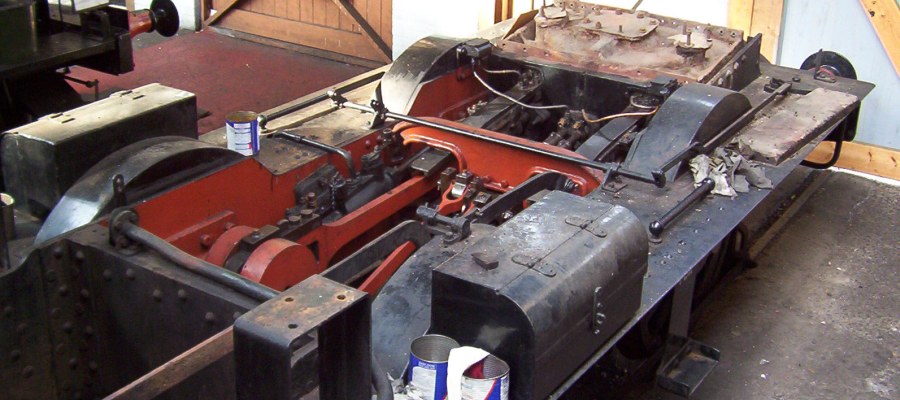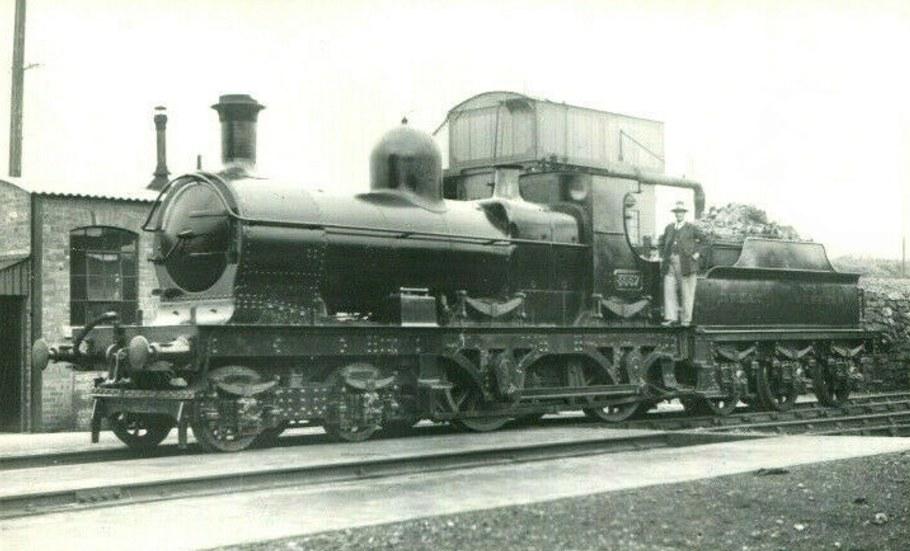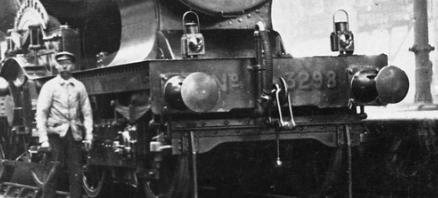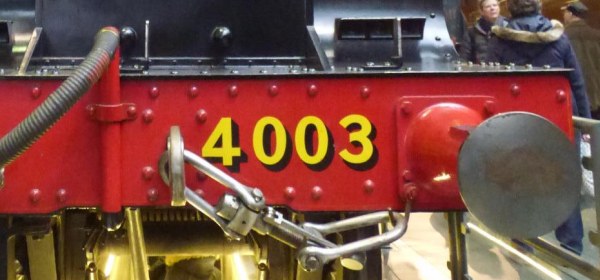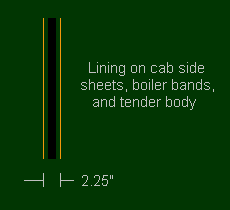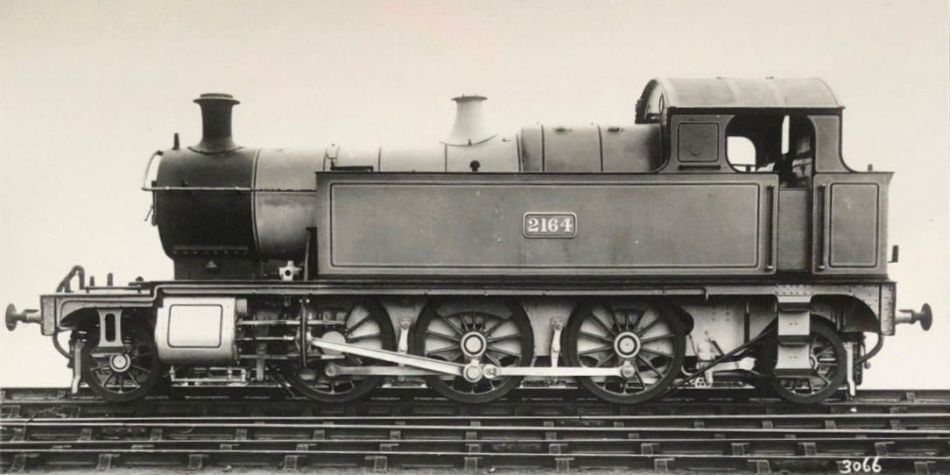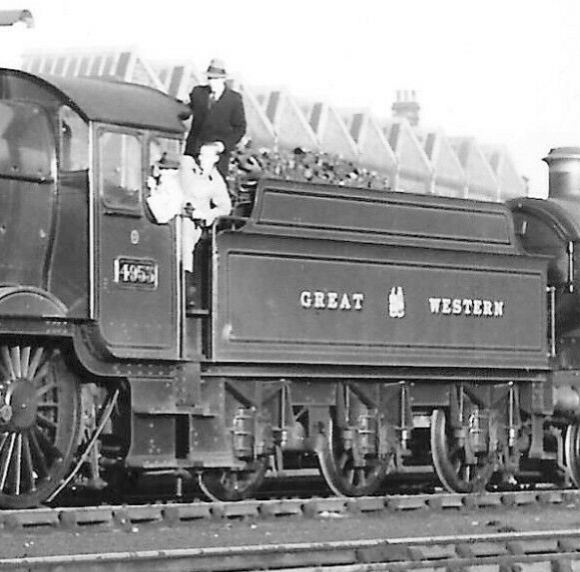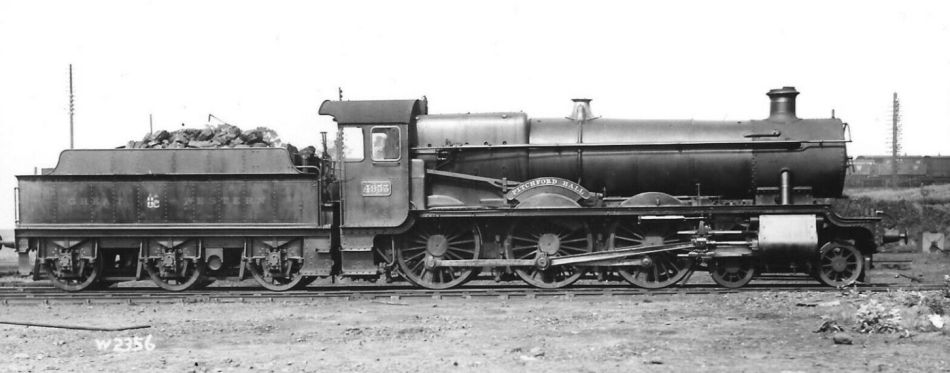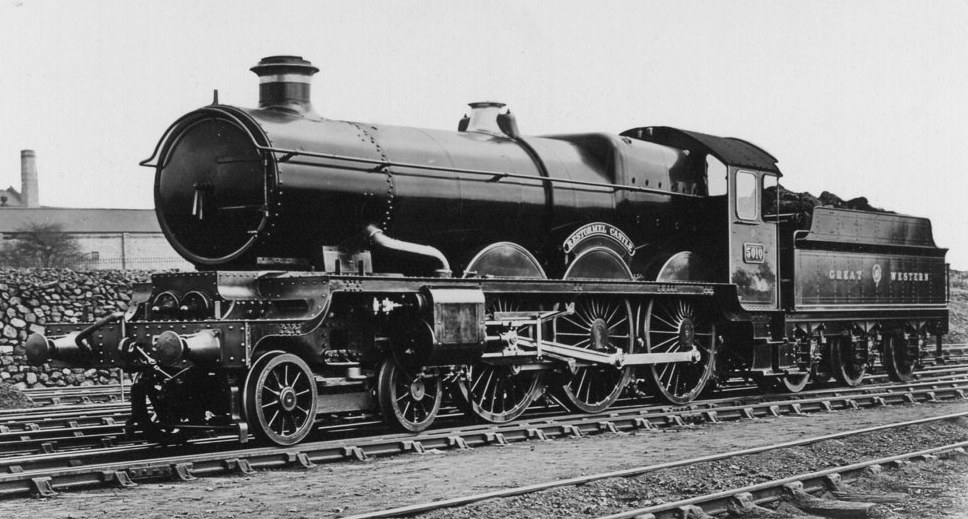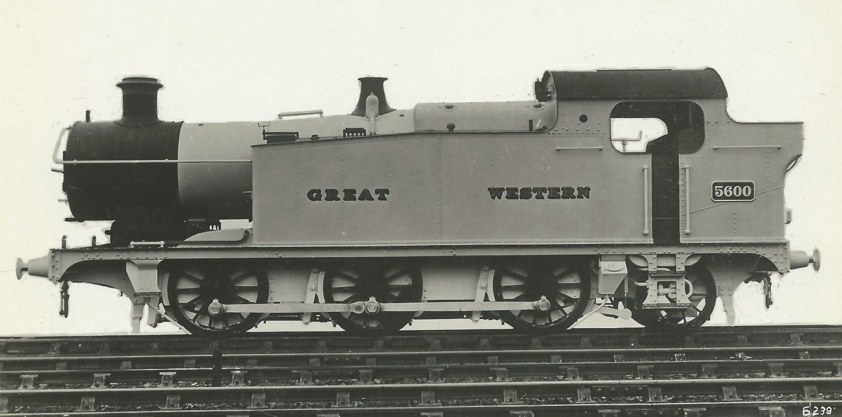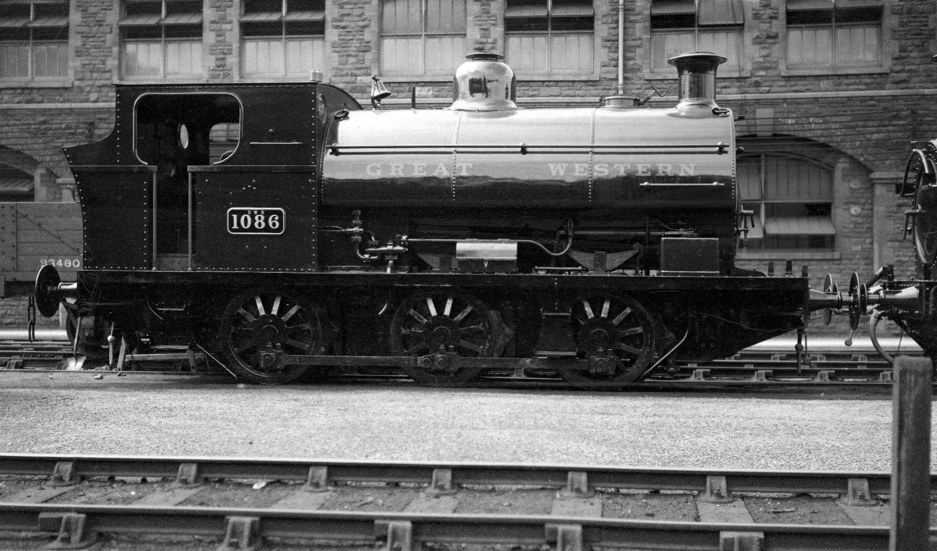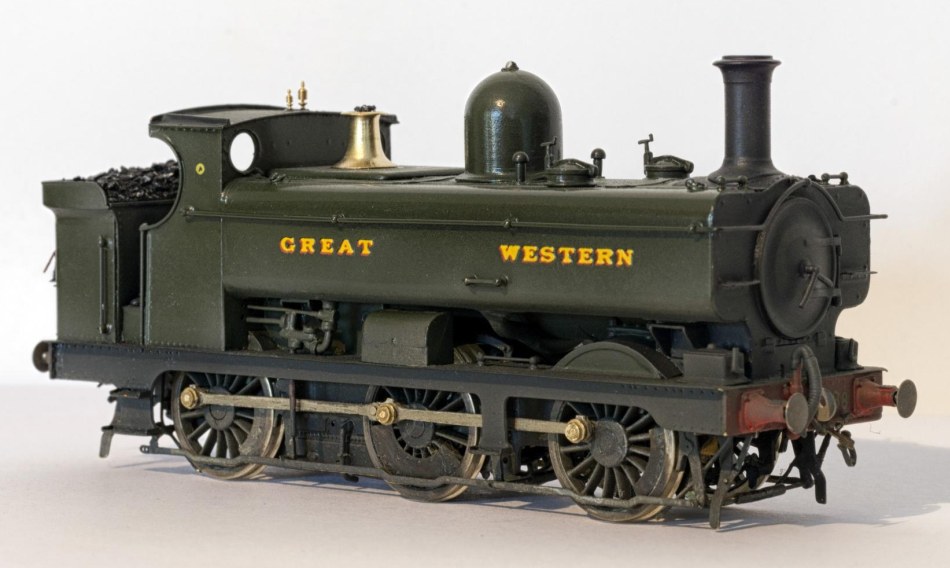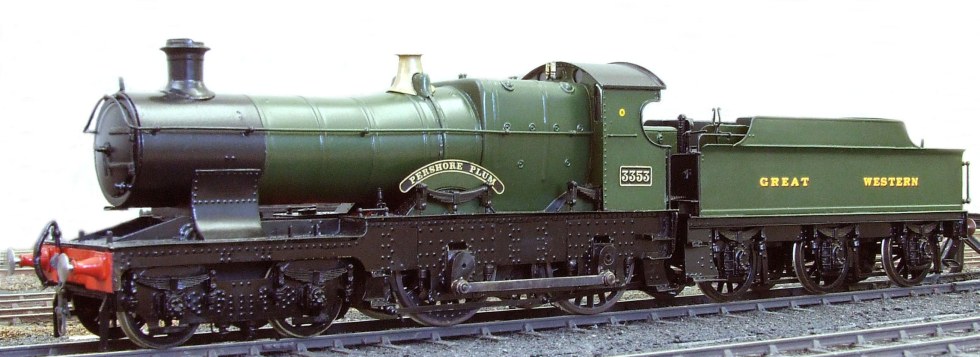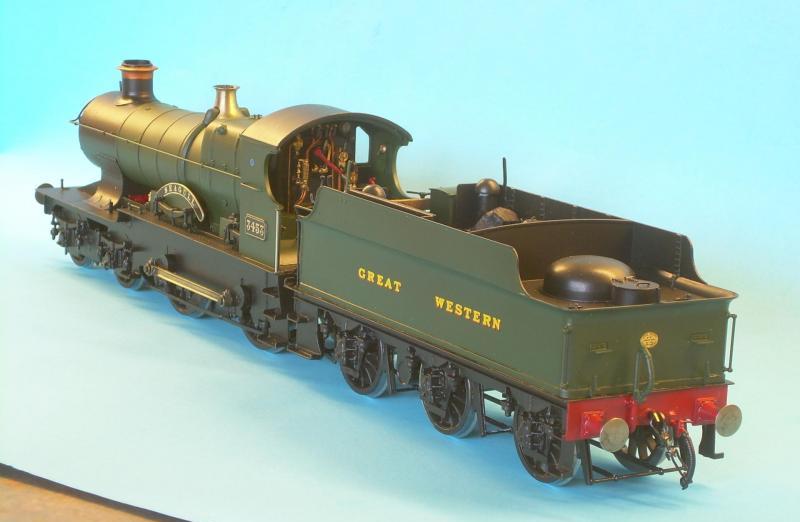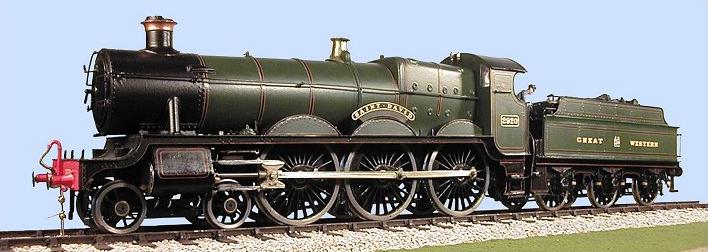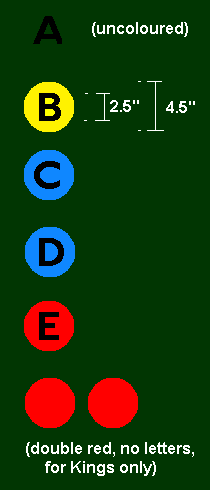| Section Page | Previous Page | Next Page |
GWR 1906–1934 loco livery
Bodywork and frame coloursThe early part of this period represents an overlap from the developments and changes being seen in the pre-1906 era. From 1906 *, wheels and the outsides of frames were black, and splasher fronts green, although splasher tops remained black. Locos now carried the garter crest on the tender sides. Springs were regarded as part of the footplate, and were black. Express passenger locos continued to be fully lined, including cylinder covers and the outsides of frames. Lining on the tops of fireboxes ceased at some point during the Churchward era, but the exact date is not known. Insides of cabs remained green. Safety valve covers were polished. Buffer beams and buffer stocks (except for their top steps, which were black) continued to be in China Red (vermilion). ( * The County Tanks of August/September 1906 are thought to have been the first production batch of new locos with black wheels and frames.) The lining situation on non-express passenger locos and goods locos is however far less clear. The early Churchward era was characterised by many Dean loco classes receiving numerous and regular changes to boilers, tanks, fireboxes and bunkers, and it seems that lining ceased to be applied to many such locos, particularly members of goods classes, possibly as early as 1904/5. Saddle tanks were normally unlettered and unlined after 1906, but some newly converted Pannier tanks appearing after 1910 were lined with insignia. Like the pre-1906 era, the painting resources of Swindon were constrained owing to the sheer number of locos being newly built or being upgraded or being repaired, and thus partial repaints and partial lining practices for the non-express and good locos would probably have continued. Photographic evidence suggests that painted domes were common by c 1908, even on express passenger engines. Some pannier tank locos however were still being shopped with polished brass domes and polished steel handrails, smokebox door rims, hinges and darts as late as 1912. The last polished dome to be seen in service was 1926 (on a Duke). Safety valve covers remained polished brass. Splasher rims/beadings were polished on some express passenger locos (Saints, Stars, and most 4-4-0s), but appear to be painted over, probably in black, for goods and tank engines. Insides of frames, and connecting rods and valve gear inside the frame, were Venetian Red. GREAT (crest) WESTERN started to be added on the sides of larger tank locos from 1906, with the number plate being moved to the bunker side. This style was not consistently present, with many tank locos carrying their number plate centred on the tank sides. Tank fronts on saddle and pannier tanks, where the tanks ended flush with the front of the smokebox, were black. For tank locos with enclosed cabs, the outer rear face was black. Tops of side tanks were black, as were tank fillers, tank vents and lifting rings. Backheads were black, but interiors of cabs, including the underside of the roof, were green. Tool boxes on the top of tanks and tenders were green. Loco lamps had plain black bodies from c 1903 until 1915, when they became red, although this change was probably a leisurely one. Red lamps appeared earlier than 1915 however, but were probably confined to railmotors and autotrailers. There were a few experimental liveries during this era. Some enclosed-cab 517s used for early autotrains were painted brown (described in the Railway Magazine as 'reddish brown'), lined orange, in 1905. After WWI, some 517s were painted crimson lake c 1919 to match the livery of autotrailers. RCTS gives the numbers of the 517 class locos appearing in brown or crimson as: 202/22, 518/23/4/6/30/1/3/44/6/61/4, 528/9/31/3/48, 1155–7/60/1/3/5 and 1423/5/70/88, although unfortunately no differentiation is given between those receiving brown and those receiving crimson. Some of the brown-liveried 517s are thought to have retained the livery until the mid-1920s, the special colours for the 517s having been discontinued from 1924. Some 4-4-2 'County' tanks, e.g. 2225, were painted in crimson lake livery (retaining black wheels and frames) in 1909. Works plates on locos were gradually removed from 1911. They were however retained on tenders. During WWI, locos requiring full repaints in the works were unlined, and from 1915–1917 received an austere unlined sandy shade of khaki body livery 1, with black frames, and possibly black bufferbeams. The amount of painting done during WWI was however minimal, many of the workforce being abroad at the front or employed on war work, and it is thought that the number of locos appearing with the khaki livery was small. Moguls 4381–99 and 5319–5330 (excepting 5327) are thought to have been painted in khaki, with the latter set being shipped directly to France, although other Moguls being built at the time received standard green. The vast majority of locos would have carried their pre-war liveries throughout the war, often under a coat of grime. It seems that green made a reappearance in 1917, but was unvarnished. Immediately following WWI, some, perhaps many, express locos were outshopped without lining, at least until reasonable painting resources were reinstated at the works. The application of the crest to locos and tenders passing through the works was abandoned from 1916. Cylinder covers were unpainted and burnished on Saints, early Stars, early Moguls and early large prairies. The practice discontinued before WWI, but made a brief reappearance with the Kings. All control surfaces (regulator and reverser etc) in the cab were unpainted. (Regulator levers did not become red until the BR(W) era.)
Following the grouping in 1922, Collett re-introduced full lining for express passenger locos – the classes involved were the Stars, Saints, Counties, Castles, and later on the Halls and Kings. The lining extended to splashers and cylinder sides. Ordinary passenger and goods locos never regained the lined livery, and were unlined. Safety valve covers for the express passenger loco classes remained polished brass, post 1922. For ordinary passenger and goods locos however, the situation is less clear. Officially, safety valve covers on such locos were painted green, but there is evidence that safety valve covers on many ordinary passenger locos were left in an unpainted brass state, at least for the first few years after 1922. Panniers 7700–25, 7775–99 and 8700–49 were delivered from their outside contractors with polished brass safety valve covers, although most were soon painted over. The initial Collett Prairies of 1929 had polished safety valve covers. The first lot of 48xxs had painted over safety valves, but many 1934 panniers had unpainted ones. The safety valve situation continued to be variable until the mid- to late-1930s, when a clearer distinction was drawn between 'goods' locos (with painted over safety valve covers) and 'ordinary passenger' locos (with polished or unpainted brass safety valve covers). Many engines with painted safety valve covers were brightened by the removal of the paint at local sheds, on an adhoc basis. Boiler handrails were black adjacent to the smokebox and green adjacent to the boiler and firebox. On pannier and saddle tanks, the handrail adjacent to the tank was green, but changed to black at the front edge of the tank. Cab handrails and matching tender handrails were unpolished, with only their fixings being painted. The perimeter beading on the top of tender fenders was black, as was the ejector pipe on the right-hand side of locos. The perimeter beading of the cabside cutout however was green. Cab interiors were green (and lined on lined locos), but the backhead was black. Chimney tops on express passenger locos were still polished copper, but were painted black on ordinary passenger and goods locos. Between 1925 and 1930, some locos were painted in unlined black – these included the unmodified ROD 2-8-0s 3050–99 and some time-expired and soon-to-be-withdrawn Armstrong and Dean Goods locos. For a detailed description of the application areas of colours, see Ian Rathbone's comprehensive guide to loco painting, covering 1923 to 1939.
For small side tanks and saddle tanks, it seems bufferbeam numerals were rarely applied, at least at first. The application of bufferbeam numerals to such locos became more common towards the end of the 1920s, even to saddle tank locos, regardless of whether insignia was present on the tanks. It seems Pannier tanks always carried bufferbeam numerals. Bufferbeam numerals were never applied to tenders.
Lining
InsigniaThroughout most of this period, the application of insignia was complex, and it wasn't until the late 1920s that a consistent presentation became established. From 1906, the words 'GREAT WESTERN' appeared on tender sides, with the Garter Crest appearing between the two words. The principal colour of the lettering was:
The lettering was 6½" tall overall, being 5" yellow or gold, the shading being 7/8" vermilion and 5/8" black. For small tank locos, the situation was more complex. Insignia and crests were applied to a few locos newly fitted with pannier tanks and some sidetank passenger locos. Saddle tanks and older sidetank locos with number plates in the middle of the tanks continued not to carry any insignia, but insignia began to make an appearance on some 517 locos from the end of WWI, the numberplates usually being repositioned at the cab end of the tank. By the early- to mid-1920s, application of insignia to 517 and Metro tanks became more common. Pannier tanks however had insignia from their inception, even the 'goods only' specimens. After WWI, the appearance of the Garter Crest on tenders of ordinary passenger and goods locos became rare, the application of the Garter Crest having been abandoned from 1916. In 1923–4, the Garter Crest made a reappearance between the words GREAT and WESTERN on tender sides for tenders intended to work with express passenger locos. However, with tender changing occuring regularly, some express passenger locos would have run with tenders from ordinary passenger locos, and thus might not display a Garter Crest. In 1926, the Coat of Arms, as in the Saint illustration below, began to replace the Garter Crest on tenders allocated for express passenger locos. This change was gradual, because tenders were not overhauled and repainted as often as locos. The tender of Castle 4090, outshopped in July 1925, appeared with the Garter Crest, whereas the tender of Castle 4094 appeared c 1926 with the Coat of Arms. In these cases, it is likely a pool of 3500g tenders with Garter Crests existed for the new locos, or supplies of the Garter Crests transfers were being used up. Tenders were still appearing with the garter crest as late as March 1928. The Coat of Arms was never applied to non-tender engines. Where no Garter Crest of Coat of Arms was applied, the words 'GREAT' and 'WESTERN' were still spaced apart as though they had been applied, but there were some exceptions to this general rule. Some remaining saddle tanks began to have insignia applied from the mid-1930s.
Examples of the post-1922 unlined green livery for ordinary passenger locos. Above is Greg Shaw's 4mm model of 3353 'Pershore Plum', and painted by Ian Rathbone, depicted as running immediately after its named was changed (originally 'Plymouth', on an oval plate) in 1927. It has a 3000g tender, flush-riveted smokebox and still has portholes in the cabfront. Image courtesy of John Brighton. Below is Sandy Harper's 7mm model of 3453 'Seagull', one of the last batch of deep-framed ('Bird' series) of Bulldog, running with a 3500g tender. Both are built from Martin Finney etched brass kits. The Bulldogs were introduced in 1899 as developments of the earlier Duke class.
The 4-6-0 Saint class seen here is from a Slaters 7mm kit, depicted in post-1927 livery style. The Saints were among the most prominent locos in Churchward's design revolution, and the basis of the later Halls and 10xx Counties. The Saint Class first saw the light of day as four prototype engines built during 1902 and 1903. Image courtesy Slater's Plastikard.
Power and route restriction indications
1 Great Western Way, HMRS 1978
|
||||||||||||||||||||||||||||||||||||||||||||||||||||||||||||
| Section Page | Previous Page | Next Page |
